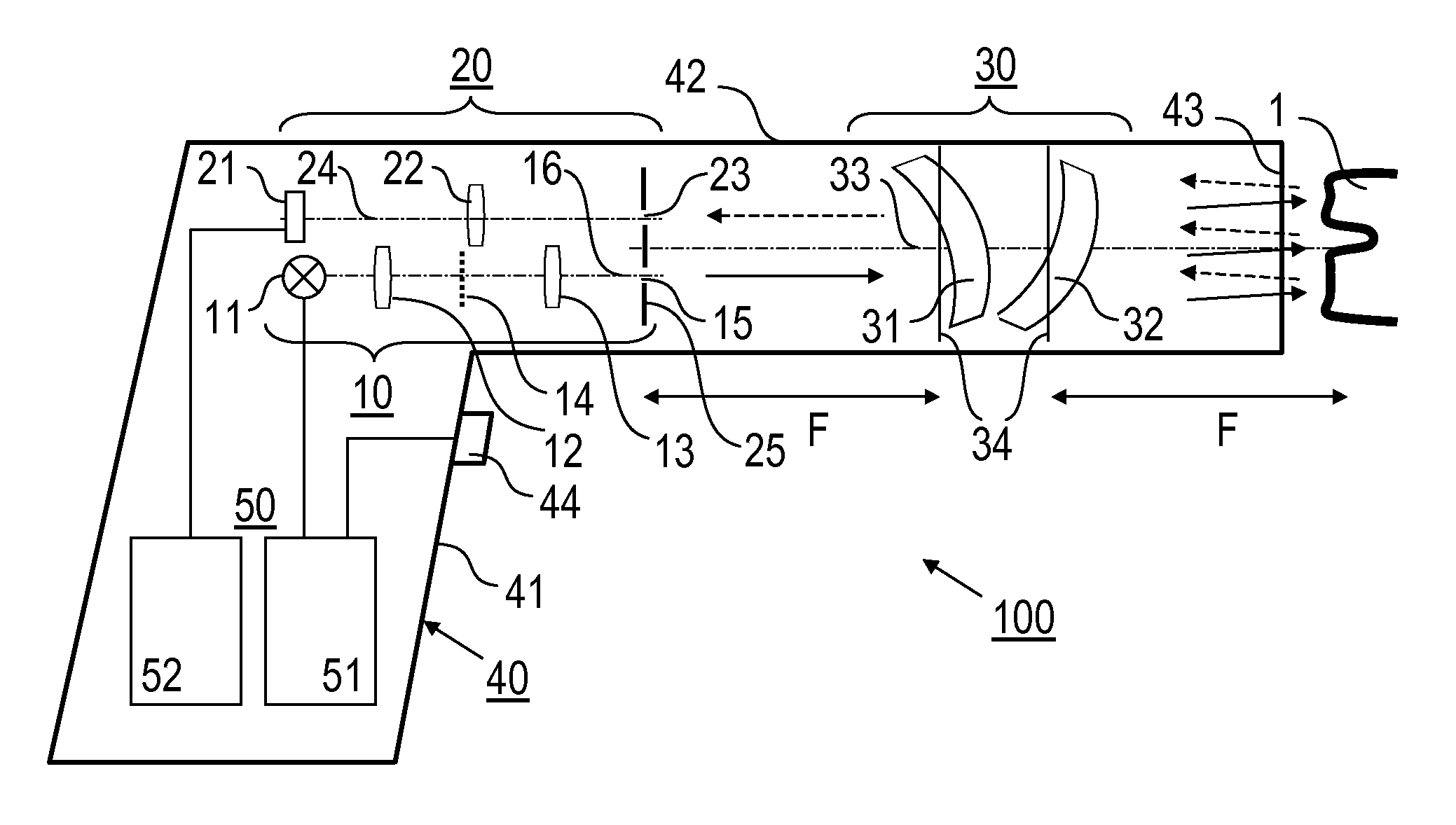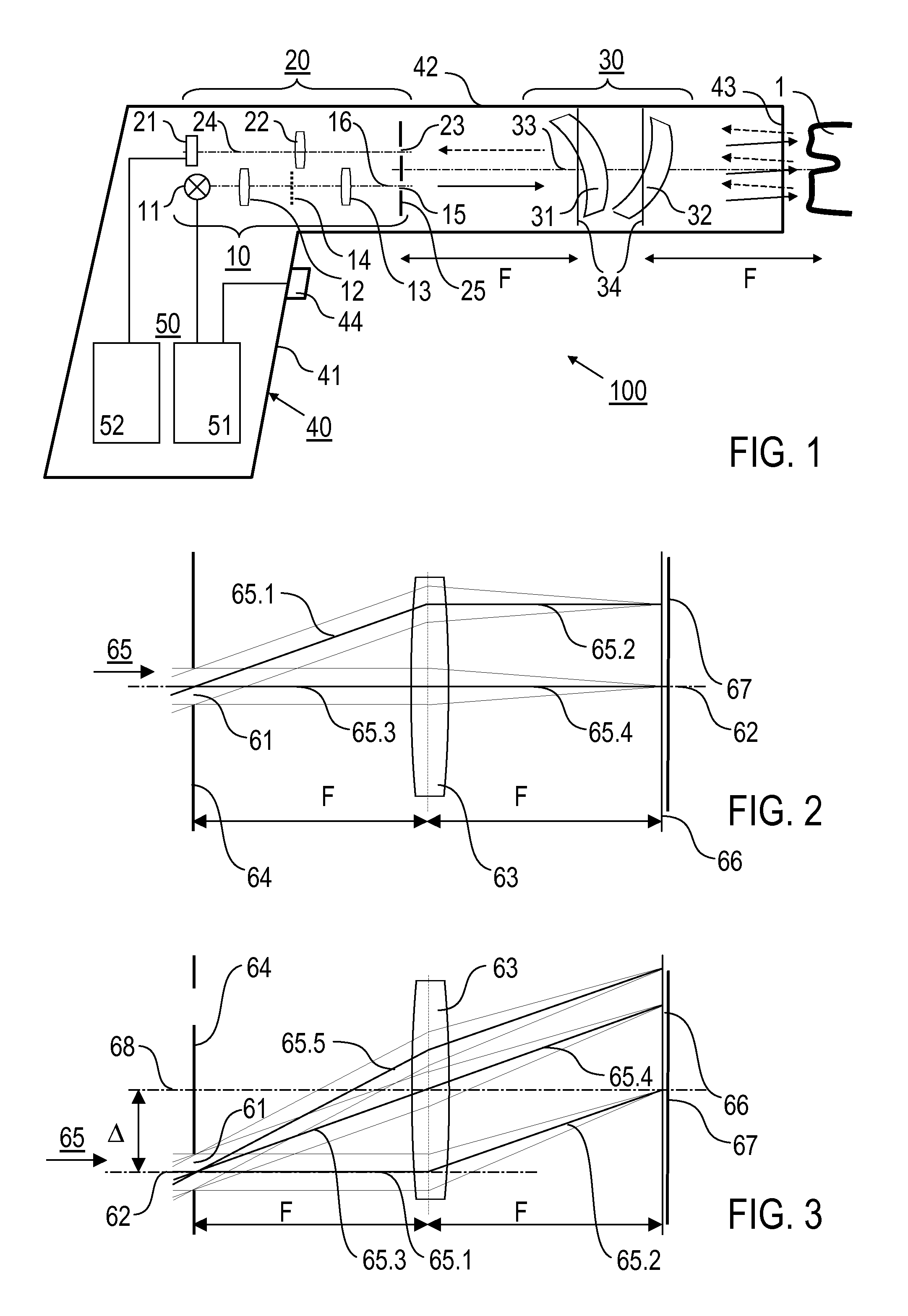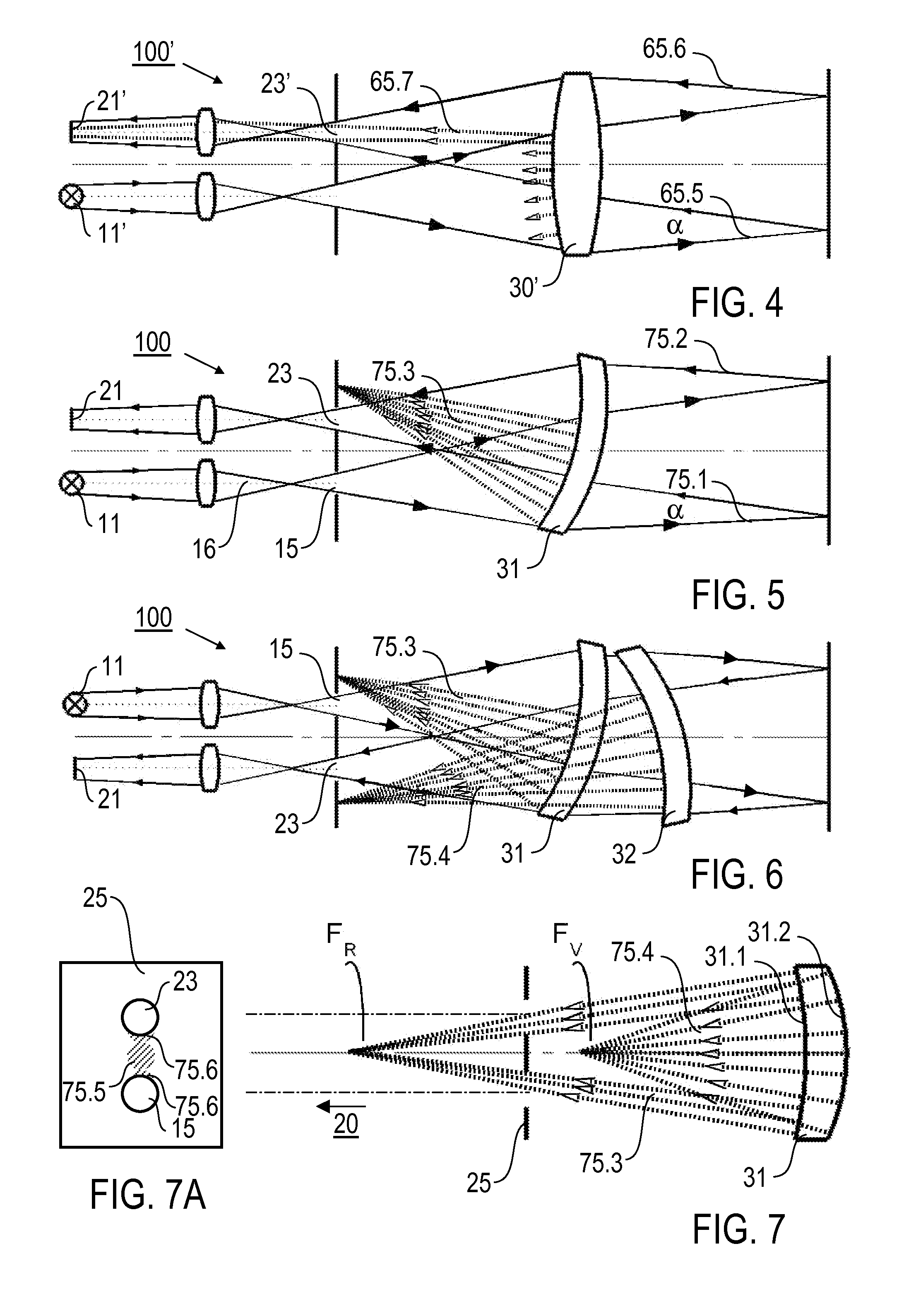Triangulation camera device and triangulation imaging method
- Summary
- Abstract
- Description
- Claims
- Application Information
AI Technical Summary
Benefits of technology
Problems solved by technology
Method used
Image
Examples
Embodiment Construction
[0029]Embodiments of the invention are described in the following with particular reference to the telecentric configuration and the inventive surface reflection suppression. Known details of triangulation cameras and the use thereof, in particular the design of a camera casing, the selection of a light source and / or a detector camera, quantitative features, like the size and geometry of the illumination pattern or the magnification of the imaging optic, the coupling with a control device, the reconstruction of a shape of an object surface are not described here as they are known as such from prior art. Furthermore, particular reference is made to a triangulation camera device configured as a medical camera for medical imaging, in particular a dental camera for imaging a tooth surface. Again, reconstructing of a tooth surface shape and obtaining input data for prototyping a tooth filling are known as such from prior art. The invention is not restricted to the dental camera applicati...
PUM
 Login to View More
Login to View More Abstract
Description
Claims
Application Information
 Login to View More
Login to View More - R&D
- Intellectual Property
- Life Sciences
- Materials
- Tech Scout
- Unparalleled Data Quality
- Higher Quality Content
- 60% Fewer Hallucinations
Browse by: Latest US Patents, China's latest patents, Technical Efficacy Thesaurus, Application Domain, Technology Topic, Popular Technical Reports.
© 2025 PatSnap. All rights reserved.Legal|Privacy policy|Modern Slavery Act Transparency Statement|Sitemap|About US| Contact US: help@patsnap.com



